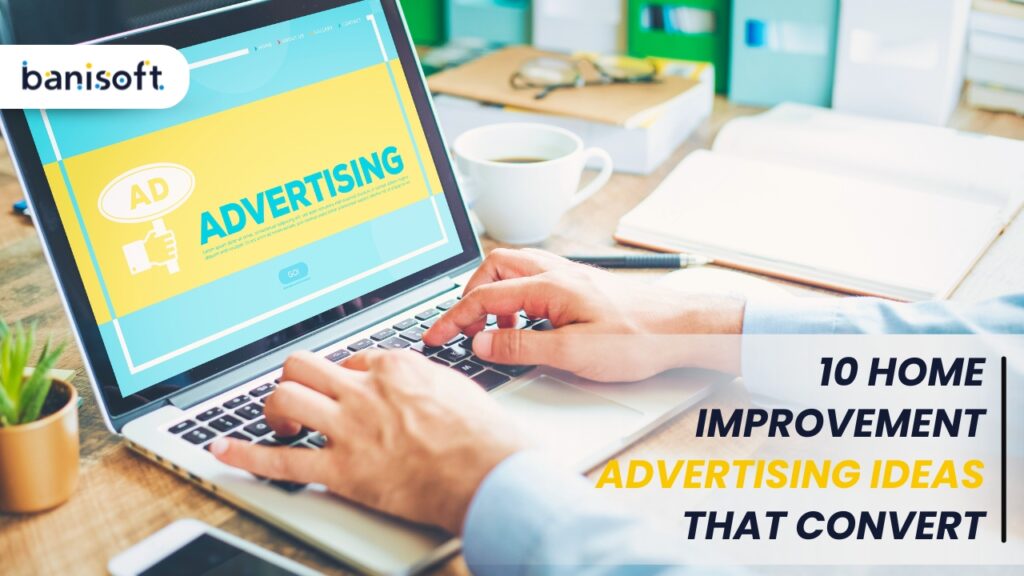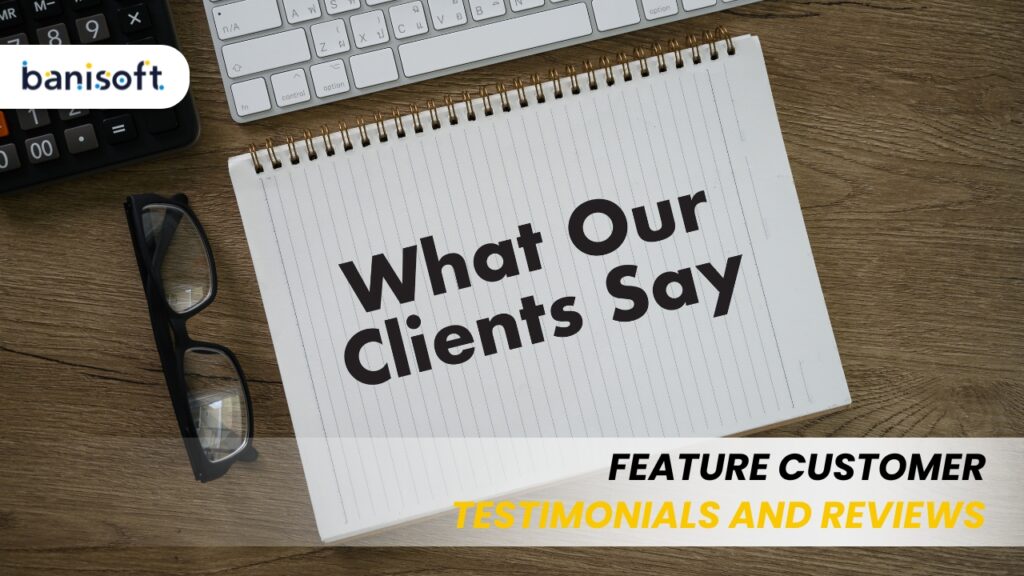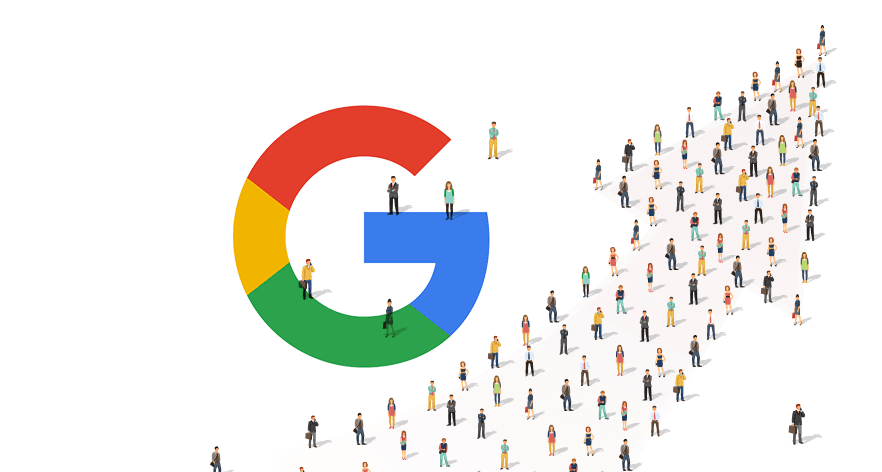How Much Does Google Ads Cost in 2024? A Simple Guide
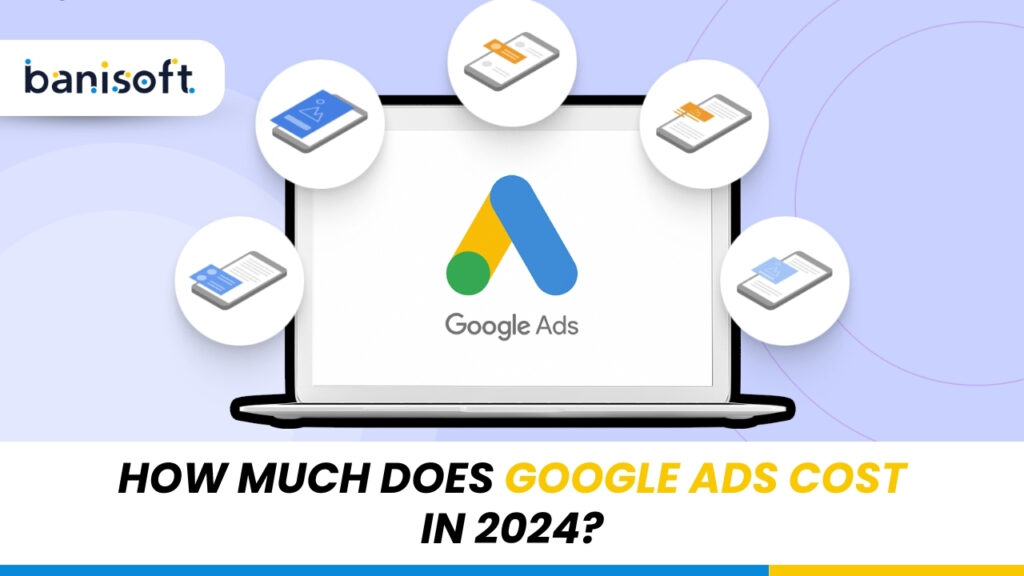
In the ever-evolving realm of digital marketing, staying ahead of the curve requires embracing new trends and technologies.
One of the most potent tools available to a marketer is Google Ads, a platform capable of significantly enhancing your business’s online visibility and drawing targeted traffic to your website.
However, given its fluctuating pricing and constantly updating algorithms, the question of “What will Google Ads cost in 2024?” continues to puzzle many.
Current statistics indicate a rising trend in business investments in Google Ads, with overall ad spending expected to exceed an astonishing $150 billion worldwide in 2024.
Typically, companies are paying between $0.11 and $0.50 per click on the Google Search Network, while costs on the Google Display Network range from $0.51 to $1.00 per 1,000 impressions.
Additionally, 44% of businesses report monthly expenditures on Google Ads campaigns falling between $100 and $10,000.
These figures highlight the platform’s vast potential for driving growth but also emphasize the necessity of understanding its cost structure.
Comprehending the cost structure of Google Ads is vital for optimizing your advertising budget and ensuring a good return on investment (ROI).
Whether you’re a small business owner aiming to stretch every marketing dollar or a seasoned marketer looking to fine-tune your strategies, this detailed guide will offer the insights needed to navigate the complex world of Google Ads pricing in 2024.
From the factors influencing costs to practical budgeting tips, we’ll break down everything you need to know to make well-informed decisions and maximize your ad spend efficiency.
So, let’s dive in and uncover the real cost of Google Ads this year!
What Influences Google Ads Pricing?

Key Factors
- Industry
Your industry significantly impacts the cost of Google Ads. Some industries, such as legal services, accounting, and real estate, are highly competitive, leading to higher cost-per-click (CPC) rates.
These industries often see CPC rates that can reach upwards of $50 due to the high value of converting a lead.
In contrast, industries with less competition, such as niche consumer services or local businesses, typically experience lower CPC rates, sometimes as low as $0.11 to $0.50 per click.
- Keywords
The keywords you choose are another crucial factor.
High-value, competitive keywords like “best personal gym trainer” can command a high CPC, while long-tail keywords, which are more specific and less competitive, can be more cost-effective.
For instance, targeting “affordable personal gym trainer in Mohali” might cost significantly less than a broader term.
- Market Trends
Consumer behavior and market trends are constantly evolving, influencing the cost of Google Ads.
Seasonal trends, current events, and changes in consumer interests can cause fluctuations in keyword competitiveness and ad costs.
Staying informed about these trends can help you adjust your strategy to maintain cost-efficiency.
Facebook ads have often seen a surge in performance due to specific events or trends in the world. For example- Shift to online shopping: As people reduce physical store visits, online shopping increases, boosting ecommerce ads.
- Quality Score
Google uses a metric called Quality Score to evaluate the relevance and quality of your ads, keywords, and landing pages.
This score, which ranges from 1 to 10, affects both your ad positioning and CPC. A higher Quality Score indicates that Google considers your ad and landing page relevant and useful to the user, often resulting in lower CPCs and better ad placements.
Improving your Quality Score involves enhancing your ad relevance, keyword selection, and landing page experience.
Let us take a Real-world Example–
Imagine you’re a local plumber. You’re running a Google Ads campaign targeting the keyword “plumber near me.”
- Ad: “Need a plumber? Call us now!”
- Landing Page: A generic homepage with no specific information about plumbing services.
In this case, Google might assign a low Quality Score because:
- The ad text is generic and doesn’t match the search intent.
- The landing page doesn’t provide relevant information about plumbing services.
Result: The ad is less likely to show up in top positions, and you’ll likely pay a higher cost per click.
High Quality Score Scenario
- Keyword: emergency plumber
- Ad: “24/7 Emergency Plumber – Fast Response, Leak Repair, Drain Cleaning”
- Landing Page: A dedicated emergency plumbing services page with clear information about services, contact details, and customer testimonials.
In this scenario, Google might assign a high Quality Score because:
- The ad text closely matches the search intent (emergency plumbing).
- The landing page is highly relevant to the ad and provides valuable information.
Result: The ad is more likely to show up in top positions, and you’ll likely pay a lower cost per click.
- Bid and Budget
Your bid is the maximum amount you’re willing to pay for a click on your ad, and your budget is the total amount you’re willing to spend on a campaign over a specific period.
These elements directly impact your ad costs. While setting higher bids can help secure better ad positions, it’s crucial to find a balance that aligns with your budget and campaign goals.
Effective budget management ensures that you’re maximizing your ad spend without overshooting your financial limits.
By understanding and strategically managing these factors, you can optimize your Google Ads campaigns to achieve better performance and cost-efficiency.
This foundational knowledge will empower you to make informed decisions, adjust your strategies as needed, and ultimately maximize your return on investment (ROI) in 2024.
Understanding Google Ads Cost-Per-Click (CPC)

Cost-per-click (CPC) is a fundamental aspect of Google Ads, determining how much you pay each time a user clicks on your ad.
Understanding how CPC is calculated and the factors that influence it is crucial for optimizing your ad spend and achieving better results.
Here’s a detailed look into the mechanics of CPC in Google Ads:
How CPC is Calculated
- Quality Score Calculation
As discussed before, quality Score is a critical factor in determining your CPC.
Google assigns a Quality Score to your ads based on the relevance and quality of your keywords, ad copy, and landing page.
This score ranges from 1 to 10, with a higher score indicating better relevance and quality. Factors influencing Quality Score include:
- Expected Click-Through Rate (CTR): The likelihood that your ad will be clicked when shown.
- Ad Relevance: How closely your ad matches the intent behind a user’s search query.
- Landing Page Experience: The relevance, transparency, and ease of navigation of your landing page.
Ad Rank determines the position of your ad on the search results page and is calculated using the formula:

Ads with the highest Ad Rank scores appear in the top positions. Improving your Quality Score can boost your Ad Rank even if your maximum bid is lower than your competitors.
- CPC Formula
Your actual CPC is calculated using the following formula:

This means that you don’t always pay your maximum bid; instead, you pay just enough to exceed the Ad Rank of the ad below yours.
This system ensures that advertisers with higher Quality Scores can achieve higher ad positions at lower costs.
Factors Influencing CPC
Keywords-
The competitiveness of your chosen keywords significantly affects your CPC.
Ad Relevance and Quality
Google prioritizes ads that provide a good user experience. Ads with higher relevance and quality scores not only perform better but also cost less per click.
Bid Amount
Your maximum bid is the highest amount you are willing to pay for a click on your ad. While higher bids can help secure better ad positions, it’s important to set a bid that aligns with your campaign goals and budget.
Average Costs Across Industries

As mentioned in section first, the cost of Google Ads can vary significantly depending on the industry.
Some industries face higher competition for keywords, leading to higher cost-per-click (CPC) rates, while others benefit from lower competition and more affordable advertising costs.
Here’s a detailed look at how Google Ads costs differ across various sectors:
Industry-Specific Costs
- High CPC Industries
Certain industries are known for having highly competitive keywords, resulting in higher CPC rates. Here are some examples:
- Legal Services: This industry often has some of the highest CPC rates, sometimes exceeding $50 per click. Keywords related to personal injury law, criminal defense, and other legal services are highly sought after due to the high value of each client.
- Accounting and Financial Services: Keywords related to accounting services, financial planning, and tax preparation also see high competition, leading to CPCs in the range of $20 to $40.
- Real Estate: The real estate sector, especially for terms related to high-value properties or investment opportunities, can experience CPCs ranging from $10 to $30 or more.
- Low to Medium CPC Industries
Other industries face less competition for keywords, resulting in more affordable CPC rates. Here are some examples:
- Consumer Services: Businesses offering home services, repairs, and local services often have lower CPCs, typically ranging from $1 to $5. This is due to the localized nature of their services and the lower overall competition.
- Arts and Entertainment: Keywords related to entertainment, hobbies, and arts often have moderate CPC rates, generally between $1 and $10, depending on the specificity and popularity of the keywords.
- E-commerce: The e-commerce sector sees a wide range of CPCs depending on the product category. General retail products might have CPCs around $1 to $5, while specialized or luxury items can see higher rates, up to $15 or more.
Data Tables: Average CPC and Cost Per 1000 Impressions by Industry
To provide a clearer picture, here’s a summary of average CPC and cost per 1000 impressions (CPM) for various industries:
Key Takeaways:
High-Value Sectors: Industries with high-value clients or transactions, such as legal services and financial planning, often have higher CPC rates due to intense competition.
Localized Services: Businesses offering localized or niche services generally benefit from lower CPCs, as there is less competition for geographically specific keywords.
Budgeting and Bidding Strategies
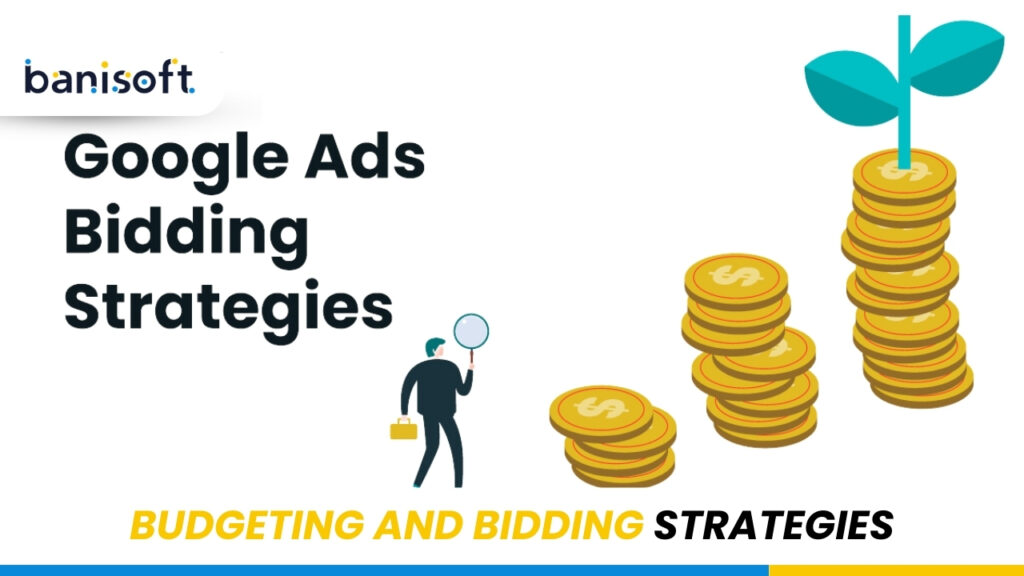
Effective budgeting and bidding strategies are essential for maximizing the performance and efficiency of your Google Ads campaigns.
By understanding how to set up your budget and choose the right bidding strategy, you can ensure that your ad spend aligns with your marketing goals and delivers the best possible return on investment (ROI).
Setting Up Your Budget
- Daily vs. Monthly Budgets
When creating your Google Ads campaign, you have the option to set daily or monthly budgets. Here’s a breakdown of each:
- Daily Budgets: A daily budget is the amount you are willing to spend on your ads each day.
This method allows for more precise control over your daily spending, helping to manage your budget on a day-to-day basis.
For example, if you set a daily budget of $30, Google will try to spend close to this amount each day, though actual spend may vary slightly.
- Monthly Budgets: A monthly budget provides a broader view of your ad spend over the course of a month.
Google will average your daily spend to meet this monthly target. This approach is useful for businesses with fluctuating daily traffic or those who want to ensure they don’t exceed their overall monthly ad spend.
For instance, if your monthly budget is $2000, Google may spend more or less on individual days but will aim to keep your total monthly spend around $1500.
- Spending Limits: Daily and Monthly Caps
Setting spending limits is crucial to prevent overspending and ensure your budget lasts throughout your campaign period.
- Daily Spending Limits: These limits cap the amount you can spend on ads each day.
Google may sometimes exceed your daily budget by up to 100% on high-traffic days, but it ensures that your average daily spend aligns with your set budget over the course of a month.
- Monthly Spending Limits: This cap ensures that your total ad spend over a month does not exceed a certain amount.
Monthly limits are particularly useful for businesses with strict budget constraints, as they provide a safety net against excessive spending.
Manual vs. Automated Bidding: Pros and Cons
Choosing between manual and automated bidding depends on your campaign goals, available time for management, and desired level of control.
Here’s a comparison of the two approaches:
- Manual Bidding
Manual bidding allows you to set individual bids for each keyword or ad group, giving you complete control over how much you are willing to pay for each click.
Pros:
- Control: You have full control over your bids, allowing you to adjust them based on performance and competition.
- Customization: You can tailor your bids to specific keywords or ad groups that are performing well or are crucial to your campaign.
Cons:
- Time-Consuming: Requires constant monitoring and adjustment to ensure optimal performance.
- Complexity: Managing bids for a large number of keywords or ad groups can be challenging and overwhelming.
- Automated Bidding
Automated bidding uses Google’s machine learning algorithms to adjust your bids in real-time based on your campaign goals, such as maximizing clicks or conversions.
Pros:
- Efficiency: Saves time by automatically adjusting bids to achieve your desired outcomes.
- Optimization: Leverages Google’s vast data and machine learning capabilities to optimize bids for better performance.
- Ease of Use: Simplifies the bidding process, making it easier for those new to Google Ads or with limited time for campaign management.
Cons:
- Less Control: You relinquish some control over individual bids, which may not align with specific campaign strategies.
- Dependence on Algorithms: Performance is heavily reliant on Google’s algorithms, which may not always perfectly align with your business goals.
By understanding and implementing effective budgeting and bidding strategies, you can optimize your Google Ads campaigns to achieve better results within your budget constraints.
Whether you choose manual or automated bidding, setting clear spending limits and aligning your budget with your marketing goals will help you maximize your ad spend and improve your campaign’s ROI.
Additional Costs and Considerations

When planning your Google Ads budget, it’s important to consider costs beyond the basic cost-per-click (CPC). These additional expenses can significantly impact your overall ad spend and influence the effectiveness of your campaigns.
Understanding these extra costs will help you budget more accurately and optimize your investment in Google Ads.
Beyond Basic CPC
While CPC is a major component of your Google Ads expenses, several other costs can arise depending on how you manage and optimize your campaigns. These additional costs include tools and services that enhance your campaign’s performance and provide valuable insights.
- PPC Management Software
PPC (Pay-Per-Click) management software can help you streamline and optimize your Google Ads campaigns.
These tools offer features such as bid management, keyword research, performance tracking, and automated reporting. Here are some key points to consider:
- Benefits: PPC management software can save time, improve accuracy, and enhance the overall performance of your campaigns.
They provide advanced analytics and automation features that help you make data-driven decisions.
- Costs: The cost of PPC management software varies widely depending on the features and scale of the tool.
Prices can range from as low as $15 per month for basic tools to $800 or more per month for comprehensive platforms with advanced capabilities.
- Conversion Tracking Tools
Conversion tracking is essential for measuring the effectiveness of your Google Ads campaigns.
These tools help you track user actions such as purchases, form submissions, and sign-ups, providing insights into how well your ads are converting.
- Benefits: Conversion tracking tools allow you to monitor and analyze the actions users take after clicking on your ads.
This information is crucial for optimizing your campaigns and improving your ROI. Accurate tracking helps you identify high-performing keywords and ad groups, enabling you to allocate your budget more effectively.
- Costs: While Google Ads provides basic conversion tracking features for free, you may need more advanced tools for comprehensive tracking and analysis.
Third-party conversion tracking tools can range from free options with limited features to more advanced solutions costing up to several hundred dollars per month.
- Agency Management Fees
Hiring a digital marketing agency to manage your Google Ads campaigns can be a valuable investment, especially if you lack the time or expertise to handle campaigns yourself. However, it’s important to consider the costs associated with agency management.
- Benefits: Agencies bring expertise, experience, and dedicated resources to manage and optimize your campaigns.
They can provide strategic insights, handle day-to-day management, and ensure your campaigns align with your business goals. This can lead to better performance and higher ROI.
- Costs: Agency management fees vary based on the scope of services and the agency’s reputation. Typical pricing models include a flat monthly fee, a percentage of your ad spend, or a combination of both. Monthly fees can range from a few hundred dollars to several thousand dollars, depending on the complexity and scale of your campaigns.
By considering these additional costs and making informed decisions about the tools and services you invest in, you can optimize your Google Ads campaigns for better performance and higher returns.
Understanding the full scope of your ad spend will help you budget more accurately and achieve your marketing goals more effectively.
Maximizing Your Google Ads ROI
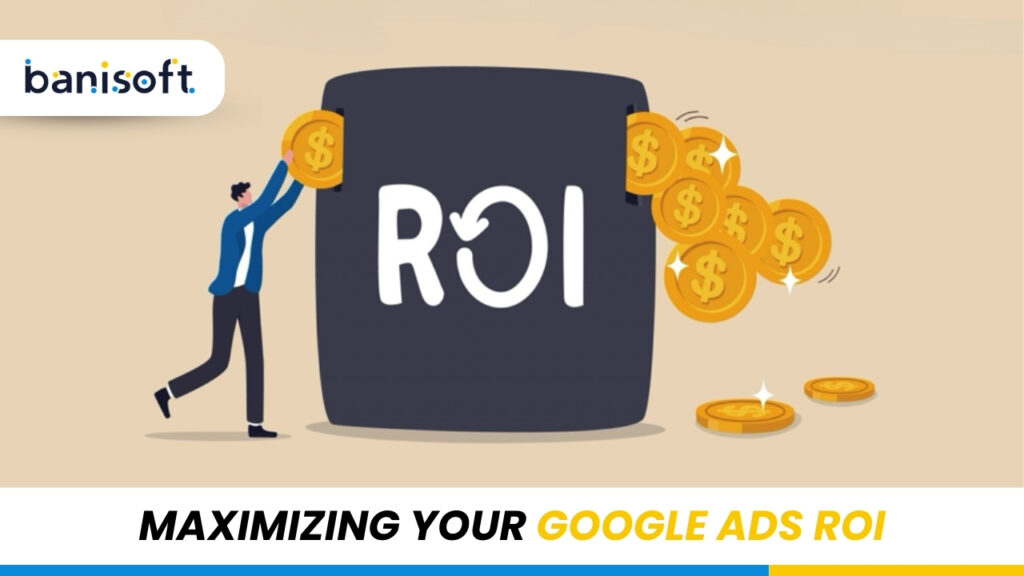
Achieving a high return on investment (ROI) from your Google Ads campaigns requires a strategic approach. By focusing on key areas such as keyword research, ad quality, and performance monitoring, you can optimize your campaigns to deliver better results and maximize your ad spend. Here are some essential tips for creating effective Google Ads campaigns:
Tips for Effective Campaigns
Keyword Research: Finding High-Intent Keywords
Keywords are the foundation of any Google Ads campaign. Identifying and targeting high-intent keywords can significantly impact your campaign’s success.
- Understand User Intent: Focus on keywords that align with the intent of your target audience. High-intent keywords are those that indicate a user is ready to take action, such as making a purchase or requesting a quote. Tools like Google Keyword Planner, SEMrush, and Ahrefs can help you find these valuable keywords.
- Long-Tail Keywords: Don’t overlook long-tail keywords. These are longer and more specific keyword phrases that often have lower competition and higher conversion rates. For example, instead of targeting the broad keyword “running shoes,” consider targeting “best running shoes for marathon training.”
- Regular Updates: Continuously update your keyword list based on performance data and market trends. Regular keyword research helps you stay competitive and capture new opportunities as they arise.
- Ad Quality: Crafting Relevant and Compelling Ads
Creating high-quality ads that resonate with your audience is crucial for achieving a high ROI. Here’s how to craft effective ads:
- Relevance: Ensure your ads are highly relevant to the keywords you are targeting. The ad copy should match the user’s search intent and provide a clear solution to their query. This improves your Quality Score and can lead to lower CPCs.
- Compelling Headlines: Write attention-grabbing headlines that immediately convey the value of your offering. Use powerful words and numbers to make your headlines stand out.
- Strong Call-to-Action (CTA): Include a clear and compelling CTA in your ad copy. Encourage users to take the desired action, such as “Buy Now,” “Get a Free Quote,” or “Sign Up Today.”
- Ad Extensions: Utilize ad extensions to provide additional information and increase the visibility of your ads. Extensions like site links, callouts, and structured snippets can enhance your ad’s appeal and improve click-through rates.
Performance Monitoring: Regular Audits and Optimizations
Ongoing monitoring and optimization are essential for maintaining and improving the performance of your Google Ads campaigns.
- Track Key Metrics: Monitor key performance indicators (KPIs) such as click-through rate (CTR), conversion rate, cost per conversion, and ROI. Use Google Analytics and Google Ads reports to gather detailed insights into your campaign performance.
- Regular Audits: Conduct regular audits of your campaigns to identify areas for improvement. Check for issues such as low-performing keywords, underperforming ads, and budget inefficiencies. Audits help you stay on top of your campaigns and make necessary adjustments.
- A/B Testing: Continuously test different elements of your ads, including headlines, ad copy, CTAs, and landing pages. A/B testing allows you to determine what works best and make data-driven decisions to optimize your campaigns.
- Adjust Bids and Budgets: Based on performance data, adjust your bids and budgets to focus on high-performing keywords and ad groups. This helps you allocate your resources more effectively and achieve better ROI.
Key Takeaways
- Effective Keyword Research: Invest time in finding high-intent and long-tail keywords to target users who are ready to take action. Regularly update your keyword list to stay competitive.
- High-Quality Ads: Craft relevant and compelling ads with strong headlines and CTAs. Use ad extensions to enhance visibility and appeal.
- Ongoing Optimization: Regularly monitor and optimize your campaigns through performance tracking, audits, and A/B testing. Adjust bids and budgets based on data-driven insights to maximize ROI.
By implementing these tips and continuously refining your approach, you can maximize the ROI of your Google Ads campaigns. Effective keyword research, high-quality ad creation, and diligent performance monitoring are key components of a successful and profitable Google Ads strategy.
FAQs About Google Ads Costs
Understanding the various aspects of Google Ads costs can help you make informed decisions about your advertising strategy.
Here are answers to some common questions about Google Ads costs to provide you with a clearer picture.
- Common Questions
Monthly Costs for Small Businesses
Q: How much do small businesses typically spend on Google Ads per month?
A: The monthly cost of Google Ads for small businesses can vary widely depending on the industry, competition, and specific goals of the campaign.
On average, small businesses spend between $100 and $10,000 per month on Google Ads. A more specific breakdown shows that:
- 44% of businesses spend between $100 and $10,000 per month.
- The actual spend will depend on factors such as the competitiveness of the keywords being targeted and the effectiveness of the ad campaigns. It’s important for small businesses to start with a budget that aligns with their marketing goals and to adjust based on the performance and ROI of their campaigns.
Differences Between CPC and CPA

Q: What is the difference between CPC (Cost-Per-Click) and CPA (Cost-Per-Acquisition)?
A: CPC and CPA are two different pricing models used in Google Ads, each serving different purposes:
- CPC (Cost-Per-Click): With the CPC model, you pay for each click on your ad. This model is ideal for driving traffic to your website. The focus is on generating clicks, regardless of whether those clicks result in conversions.
CPC is best for campaigns aimed at increasing brand awareness or attracting visitors to your site.
- CPA (Cost-Per-Acquisition): With the CPA model, you pay only when a specific action is completed, such as a purchase, sign-up, or form submission.
This model is more focused on the end result and is often used for performance-based campaigns where the goal is to generate leads or sales. CPA helps ensure that you are paying for actual conversions rather than just clicks.
Choosing between CPC and CPA depends on your campaign objectives. If your goal is to drive traffic, CPC may be more appropriate. If you aim to achieve specific actions, CPA is likely the better choice.
Effectiveness Compared to SEO
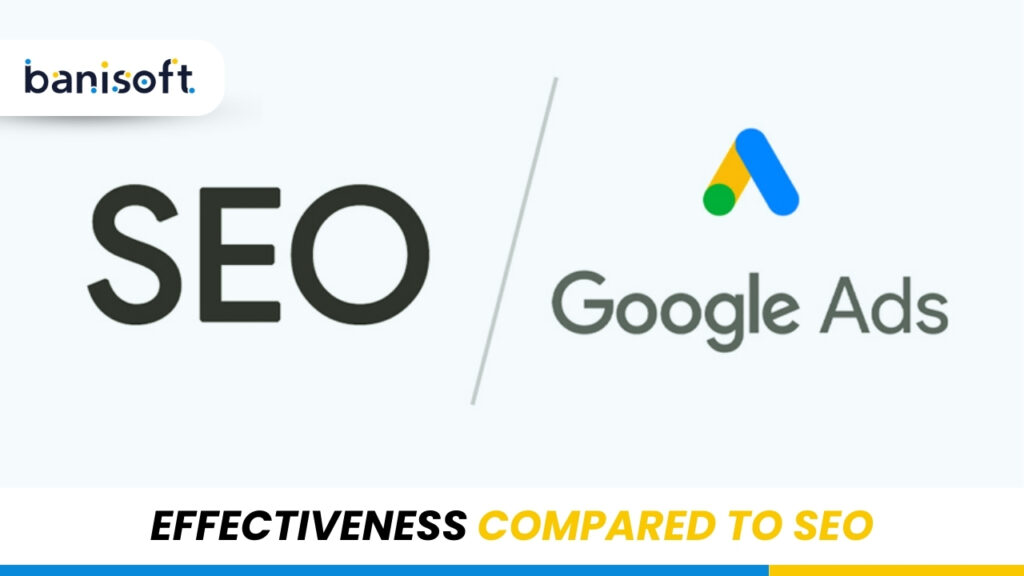
Q: How does Google Ads compare to SEO in terms of effectiveness?
A: Google Ads and SEO (Search Engine Optimization) are both effective strategies for driving traffic to your website, but they serve different purposes and have distinct advantages:
- Google Ads:
- Immediate Results: Google Ads can generate traffic almost instantly after your campaign is launched.
- Targeting: Allows precise targeting of specific keywords, demographics, locations, and times of day.
- Cost: Requires ongoing investment; you pay for each click or conversion.
- Control: Provides detailed control over ad copy, budget, and targeting.
- SEO:
- Long-Term Benefits: SEO focuses on improving your organic search rankings, which can provide sustained traffic over time.
- Cost-Effective: Although it requires an initial investment in time and resources, SEO does not incur direct costs per click or conversion.
- Credibility and Trust: Organic search results are often perceived as more credible and trustworthy by users.
- Broad Reach: SEO can attract a wider audience by targeting a range of keywords and content.
Effectiveness Comparison:
- Google Ads is highly effective for achieving quick results and precise targeting, making it ideal for short-term campaigns, promotions, and targeting specific audiences.
- SEO is more effective for long-term growth and sustainability, building credibility, and attracting organic traffic over time.
For the best results, many businesses use a combination of both strategies. Google Ads can provide immediate traffic and insights, while SEO can ensure long-term visibility and credibility.
Conclusion
- Summary
Understanding the cost dynamics of Google Ads is essential for optimizing your ad spend and achieving the best possible return on investment. In this comprehensive guide, we’ve covered:
- Factors Influencing Google Ads Pricing: We explored how industry, keywords, market trends, Quality Score, and bid and budget settings impact your ad costs.
- Understanding CPC: We delved into how Google calculates cost-per-click and the importance of Quality Score and Ad Rank in determining your CPC.
- Average Costs Across Industries: We provided insights into how different industries experience varying CPC rates, highlighting high and low CPC sectors.
- Budgeting and Bidding Strategies: We discussed the importance of setting up daily and monthly budgets, understanding spending limits, and choosing between manual and automated bidding.
- Additional Costs and Considerations: We highlighted the need to account for costs beyond basic CPC, such as PPC management software, conversion tracking tools, and agency management fees.
- Maximizing Your Google Ads ROI: We shared tips for effective campaigns, including keyword research, ad quality, and performance monitoring.
- FAQs About Google Ads Costs: We answered common questions about monthly costs for small businesses, differences between CPC and CPA, and the effectiveness of Google Ads compared to SEO.
Now that you have a comprehensive understanding of the various aspects of Google Ads costs and how to manage them, it’s time to take action.
Analyze your current Google Ads strategy and consider the following steps to enhance your campaign performance:
- Review Your Budget: Ensure your budget aligns with your marketing goals and adjust it based on your campaign performance and industry benchmarks.
- Optimize Your Keywords: Conduct regular keyword research to find high-intent and long-tail keywords that can drive better results at lower costs.
- Improve Ad Quality: Craft compelling, relevant ads with strong headlines and calls-to-action. Utilize ad extensions to enhance your ad visibility and effectiveness.
- Monitor Performance: Continuously track key metrics and conduct regular audits to identify areas for improvement. Use A/B testing to refine your ads and landing pages.
- Consider Additional Tools and Services: Invest in PPC management software, conversion tracking tools, or agency services if they can help you achieve better results.
By making informed adjustments and continuously optimizing your Google Ads strategy, you can maximize your ROI and achieve your marketing objectives more effectively.
Take the insights and tips from this guide and apply them to your campaigns to drive greater success in 2024 and beyond!
How Much Does Google Ads Cost in 2024? A Simple Guide Read More »


